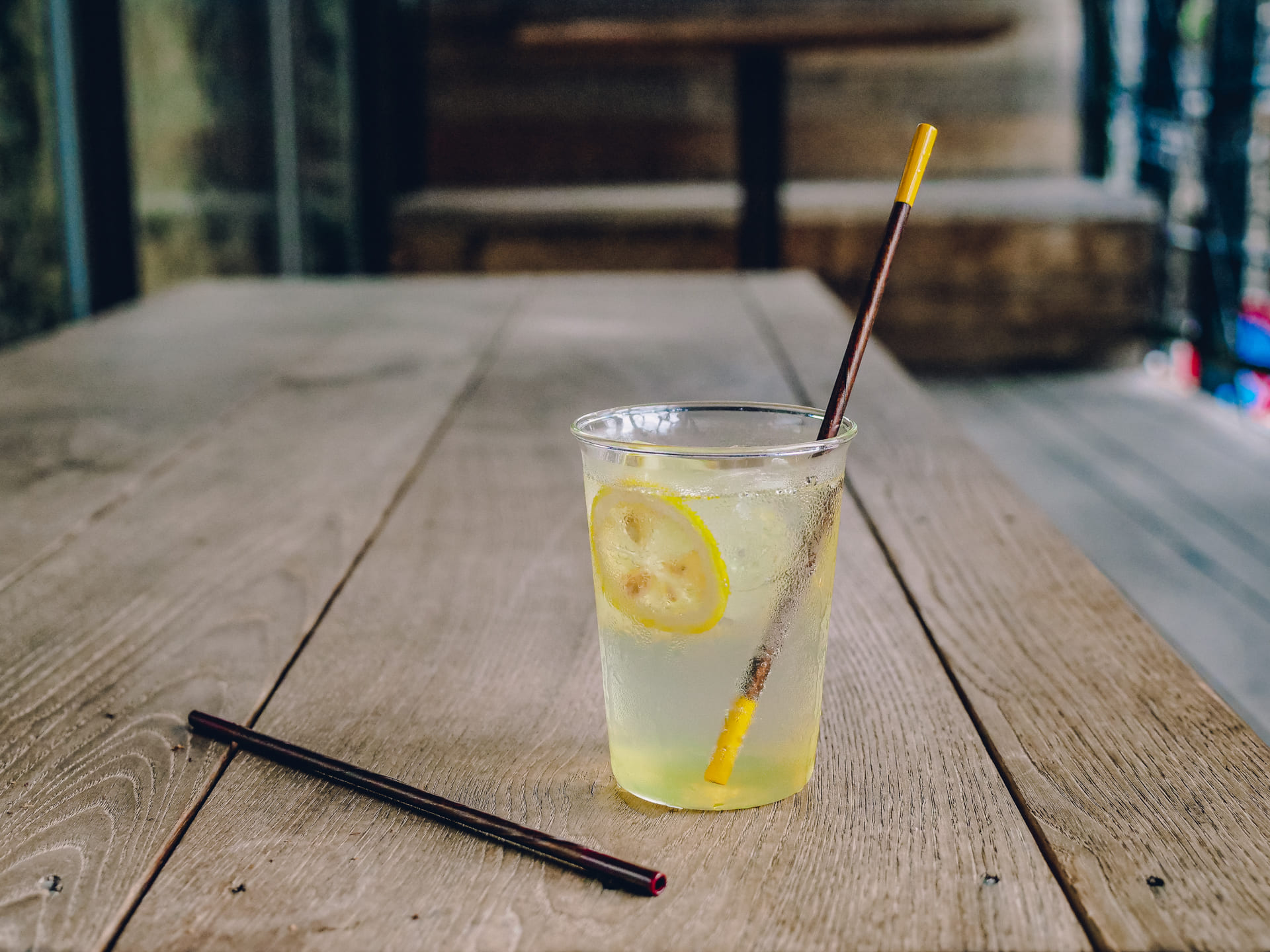
/SUW
- Ongoing
A reusable straw coated with Urushi made from wood sourced in the Kyoto City and Keihoku region. We want to address the problems facing mountains and forests. We don’t want to rely on disposable products. This initiative, which aims to create sustainable craftsmanship, was born from our shared desire with those involved in forestry and woodworking to contribute to a better future.
By coating the straw with Urushi, its durability is increased, allowing the wooden straw to be washed and used repeatedly. From plastic to wood. We hope that this small choice can help cultivate a lifestyle that nurtures a circular economy.
A Product That Speaks Our Heart
Yoshida, the craftsman behind Yoshida Woodworking, creates solid wood furniture in Keihoku, Kyoto. Our first meeting was in 2019, when we borrowed his workshop as the venue for Tom Wegener’s residency workshop, “Wegener Surf Stay in Keihoku.” Mr. Yoshida, who saw the potential in combining wood and Urushi from surfboards, approached us with the idea of creating “a wooden straw that can be reused instead of discarded.”
We hope to inspire greater understanding of the Keihoku region and the challenges confronting its mountains and forests. This is the beginning of our mission to create a product that communicates our values and vision.

From Waste Wood to Straws
The foundation of the straws is wood from the mountains of Keihoku. We use leftover logs, which would otherwise be processed into wood chips, and repurpose them into straws. When I was shown around the mountains by Yotsuji from Yotsuki Lumber, who runs forestry in Keihoku, I was deeply moved by the sight of trees that had been left toppled by typhoons and heavy rain.
These magnificent trees, nurtured by nature, could be crushed into small pieces, but before that happens, shouldn’t there be something more we can do? Seeing the current state of things only strengthened my resolve to pursue making straws.
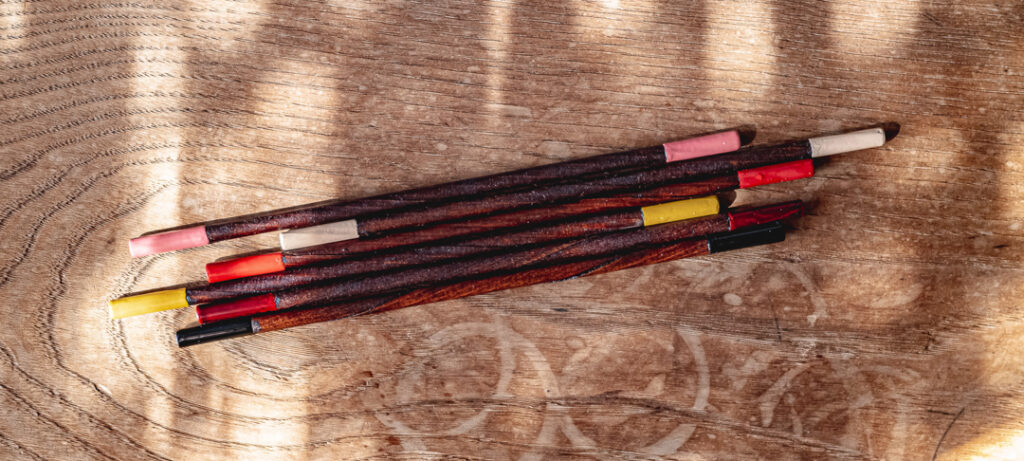
The Craftsmanship of Urushi Artisans Passed Down in Kyoto
To create a durable and user-friendly straw, we went through a process of trial and error. First, we thinly shaved the wood, rolled it into a tube shape, and began forming the straw. However, just as it was, the tip would peel off after repeated use, so we decided to apply a base layer of washi paper and then solidify it with Urushi.
Takagi from Takagi Urushi Art, an Urushi artisan specialising in Kyoto’s traditional Urushiware for tea ceremony tools, applied techniques that have been passed down in Kyoto to finish the /suw straw.
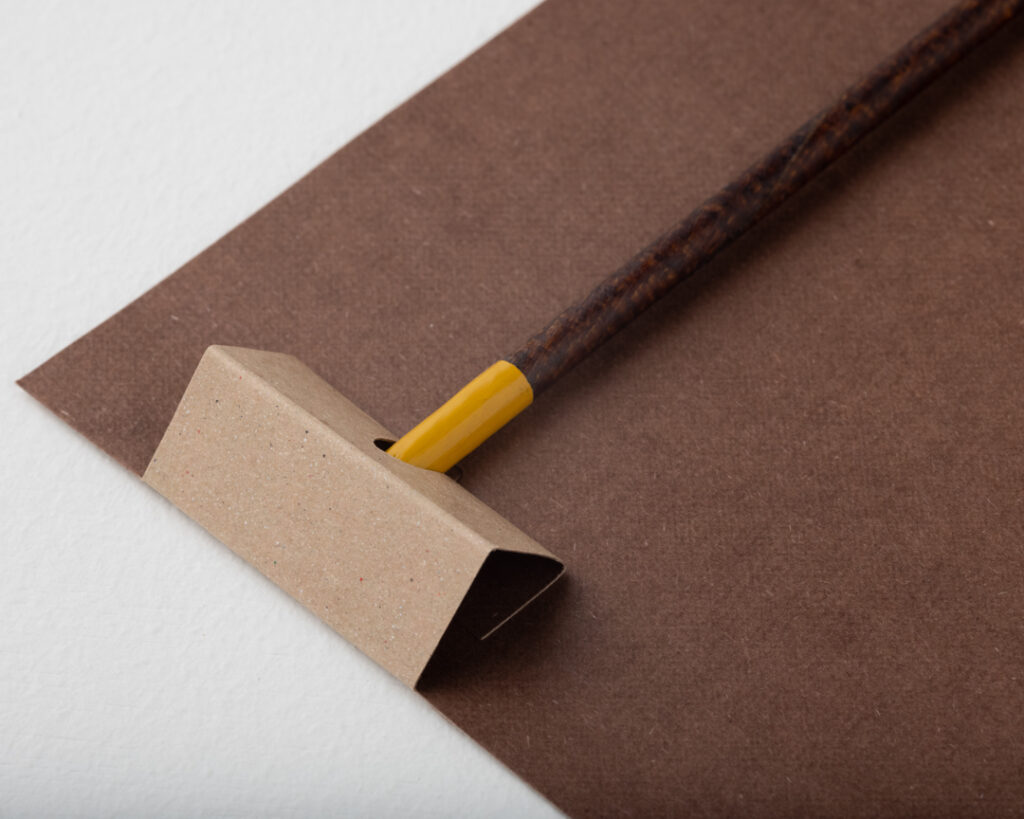
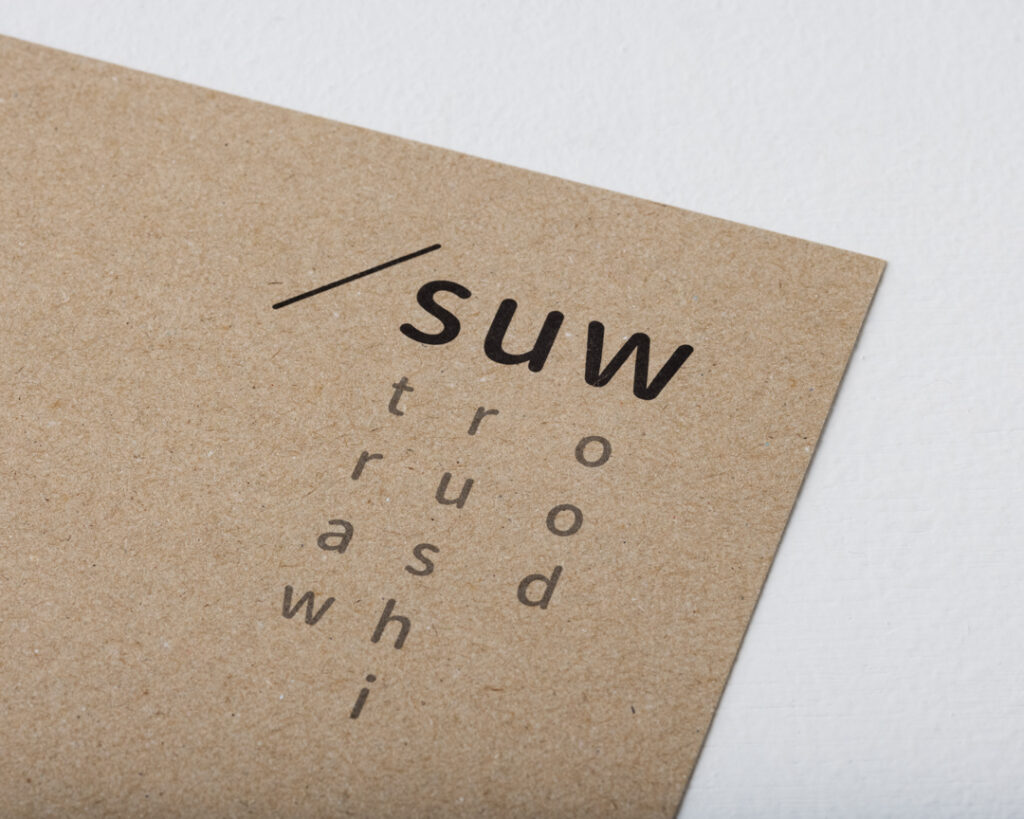
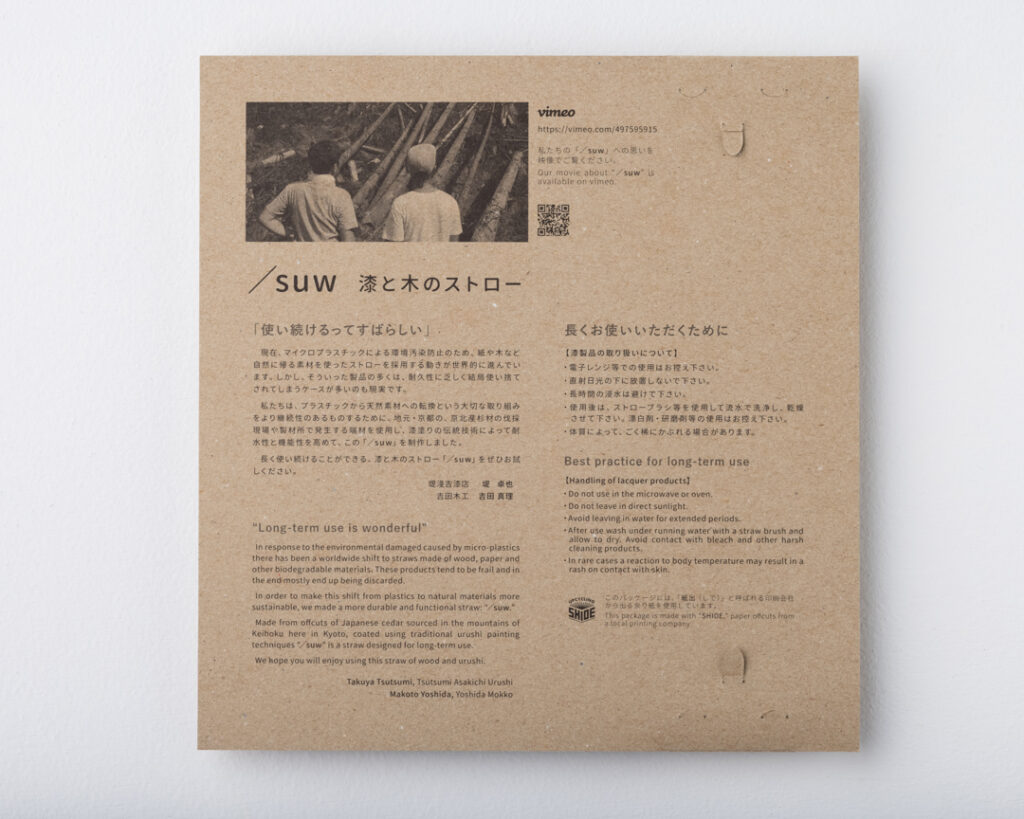
A packaging that minimises environmental impact
Many people have collaborated on the creation of the packaging. Yamashita from Shubisha provided “shide,” which is leftover sheets of printed paper, and we made sure to avoid using adhesives or glue. The design was handled by Kakefuda from Moonlite Graphics, and filmmaker Kamemura captured the entire project on video.
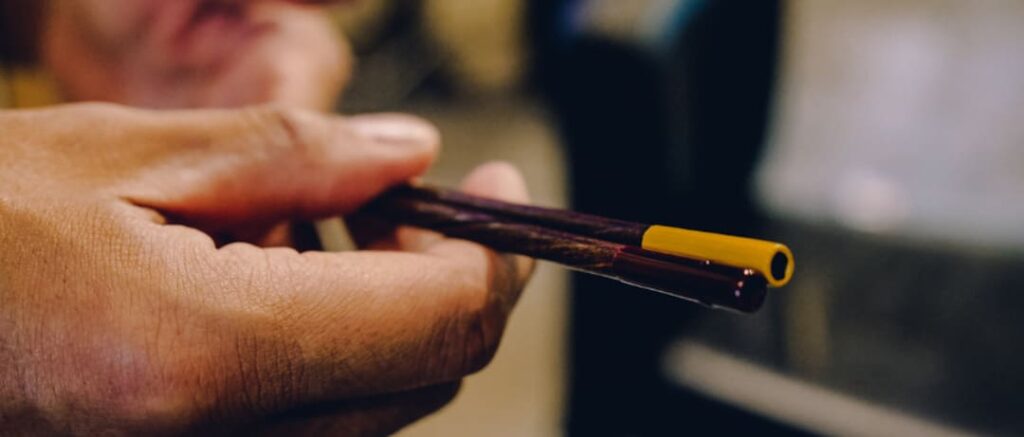
The beauty of urushi speaks to our senses.
Urushi, the tree sap, creates a strong coating while retaining moisture. It’s both hard and flexible, with a smooth and gentle texture. The delicate, silky feel is the unique charm of urushi. We believe that urushi, which has been cherished by the Japanese since the Jomon period, is a material that sharpens the senses.
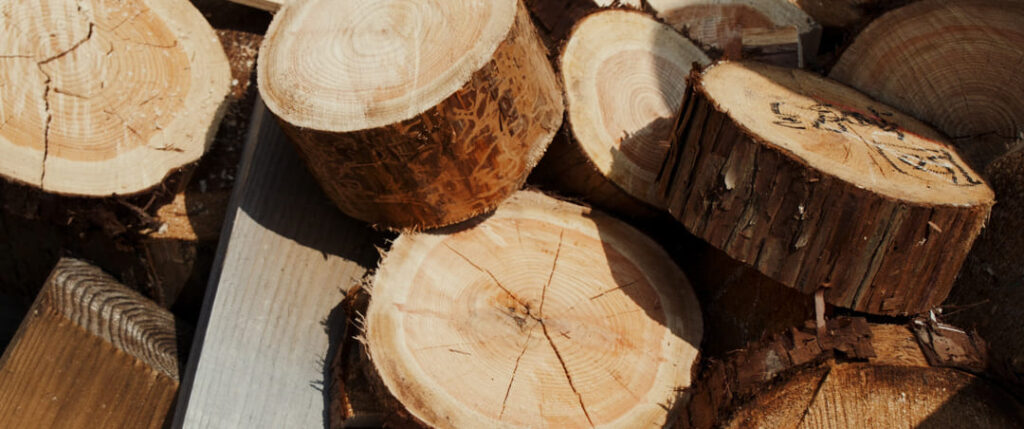
Collaboration with the Bearswood Project
What we are working on with Yoshida and the team is the Bearswood Project. In the mountains of Keihoku, the increase in “bear stripping,” where bears tear off tree bark with their claws and teeth, has become a problem. Trees affected by bear stripping grow new bark to cover the wounds, creating a unique wood grain. Until now, these trees were considered of little value as timber, but we saw the potential to turn these one-of-a-kind wood grains into art.
The increase in bear stripping is said to be due to fewer people entering the mountains than in the past. Rather than seeing bears as the enemy, we wondered if we could solve this issue by creating new value. By using this bear-stripped wood as the base for /SUW, we are proposing a way of making that involves the circulation of wood.
Contributing to CO2 Reduction by Continuing to Use /SUW
With the growing momentum of the SDGs, we are seeing more and more information about the amount of CO2 (carbon dioxide) emissions during the production processes of various products and services. However, it is difficult to judge whether the amount of emissions is high or low, or how environmentally friendly it is based on just one number. Therefore, we compared the CO2 reduction rate between traditional polypropylene straws and /SUW after using each for two years daily, using the “Deca-Boscore.”
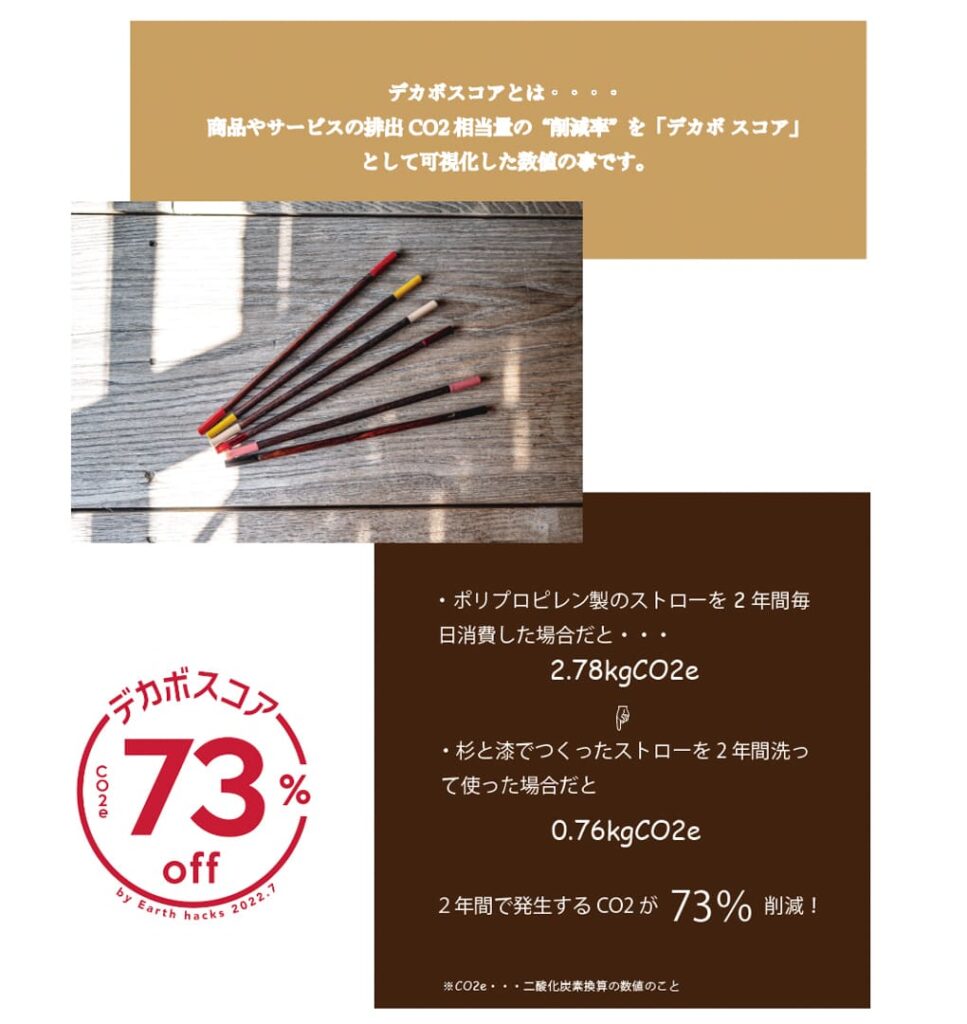
Credit
- Yoshida Woodworking
- Kamemura Yoshihiro (Camera & editing)
- Moonlite Graphics Charge Bill (Package Design)
Supported by
- Yotsuji Lamber
- Shubisha
- Keihoku Forest Association
- Tsujii Kimono Co., Ltd.
- Pangoku Sawl Co. Ltd.
- Forest of Craft
- Takagi Urushi Works
- Ono Tomosuke